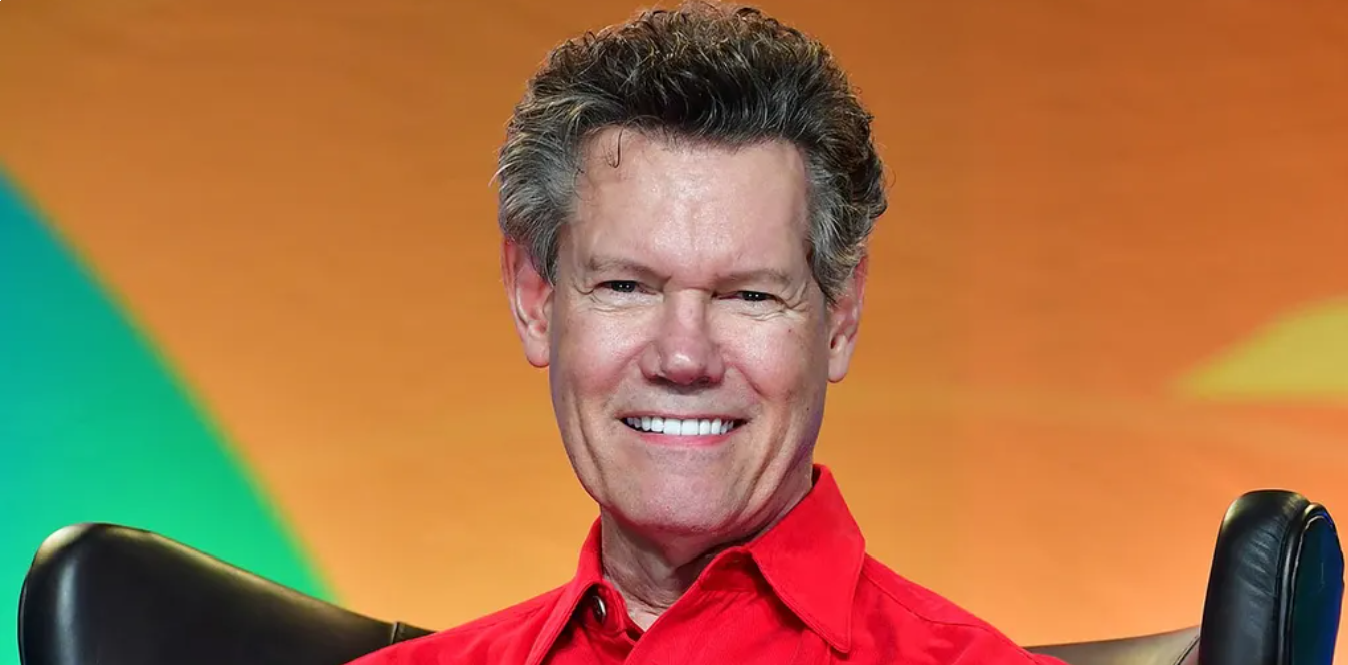When it comes to country music legends, Randy Travis is a name that resonates with fans worldwide. But beyond the stage lights and chart-topping hits lies a journey filled with challenges, particularly surrounding his mental health. Today, we’re going to explore Randy Travis's mental health journey, shedding light on the battles he faced and the resilience that defines him. If you’re curious about how one of country music’s most iconic figures navigated the highs and lows of fame and personal struggles, keep reading. This story will leave you inspired and informed.
Randy Travis’s life is a testament to the fact that even the brightest stars can face darkness. Mental health issues don’t discriminate, and they often come with a stigma that makes it harder for individuals to seek help. As we dive deeper into Randy’s story, we’ll uncover the pivotal moments that shaped his mental health journey, from his early struggles to his road to recovery.
This article isn’t just about Randy Travis—it’s about understanding mental health in the context of fame and personal challenges. We’ll explore how mental health awareness has evolved over the years and how Randy’s story can inspire others to seek help and support when they need it most. Let’s get started.
Read also:Gary Burghoff Still Alive The Truth About The Mash Stars Life Today
Biography of Randy Travis
Early Life and Career Beginnings
Before delving into Randy Travis's mental health journey, let’s take a step back and look at his remarkable life and career. Born on May 4, 1959, in Marshville, North Carolina, Randy Travis (real name Randy Bruce Traywick) grew up in a humble family. His love for music began at an early age, but his path to stardom wasn’t always smooth. From dropping out of school to facing legal issues, Randy’s early life was a rollercoaster of ups and downs.
Here’s a quick glance at some key facts about Randy Travis:
| Full Name | Randy Bruce Traywick |
|---|---|
| Birth Date | May 4, 1959 |
| Birthplace | Marshville, North Carolina |
| Profession | Singer, Songwriter, Actor |
| Spouse | Mary Davis (divorced), Elizabeth "Lib" Hatcher (married) |
Randy Travis burst onto the country music scene in the 1980s with his debut album, "Storms of Life," which included the hit single "On the Other Hand." His deep, soulful voice and traditional country style quickly earned him a legion of fans and cemented his place in music history.
Randy Travis Mental Health: The Early Signs
Struggles with Substance Abuse
Long before the term "mental health" became a mainstream topic, Randy Travis was battling demons that many couldn’t see. Substance abuse played a significant role in his early struggles. Alcohol became a crutch for him, leading to legal troubles and strained relationships. But it wasn’t just about the drinking—it was the underlying emotional pain that fueled his addiction.
According to reports, Randy often felt the pressure of living up to the image of a country music superstar. The stress of fame, combined with personal issues, took a toll on his mental well-being. While many fans only saw the triumphant performances, behind the scenes, Randy was fighting an uphill battle.
Understanding Mental Health in the Spotlight
The Stigma of Mental Health in the Music Industry
The music industry, especially in the 1980s and 1990s, wasn’t exactly known for promoting mental health awareness. Artists were expected to perform flawlessly, regardless of their personal struggles. For someone like Randy Travis, who wore his heart on his sleeve through his music, this pressure was immense.
Read also:How Much Bodies Did King Von Get The Untold Story Behind The Numbers
Let’s break down some of the challenges faced by musicians in terms of mental health:
- Constant Travel: The relentless touring schedule leaves little time for self-care.
- Public Scrutiny: Every move is under a microscope, amplifying feelings of anxiety and depression.
- Substance Abuse: Many artists turn to drugs or alcohol as a coping mechanism.
- Isolation: Despite being surrounded by people, fame can lead to a sense of loneliness.
Randy Travis wasn’t immune to these challenges. His battles with alcohol and depression were well-documented, but it wasn’t until later in his life that he began to address them openly.
Randy Travis’s Health Crisis
The Stroke That Changed Everything
In 2013, Randy Travis suffered a massive stroke that left him partially paralyzed and unable to speak. This life-altering event forced him to confront his vulnerabilities in ways he never imagined. The stroke wasn’t just a physical setback—it was a wake-up call for Randy to prioritize his mental and emotional health.
During his recovery, Randy underwent extensive therapy, both physical and psychological. It was during this time that he began to open up about his struggles with mental health. He realized that his addiction and depression weren’t something to be ashamed of but rather challenges that needed to be addressed.
Randy Travis’s Journey to Recovery
Rebuilding After the Storm
Randy Travis’s recovery journey is nothing short of inspirational. After the stroke, he worked tirelessly to regain his strength and voice. While he may never fully return to his former self, Randy has shown remarkable resilience in the face of adversity.
Here are some key takeaways from Randy’s recovery:
- Therapy: Randy engaged in both physical and mental health therapy to rebuild his life.
- Support System: Having a strong support system, including his wife and fans, played a crucial role in his recovery.
- Acceptance: Accepting his new reality and finding peace with it was a vital step in his healing process.
Randy’s story proves that recovery isn’t linear. There are ups and downs, but with determination and support, it’s possible to overcome even the toughest challenges.
The Impact of Randy Travis’s Story on Mental Health Awareness
Breaking the Silence
Randy Travis’s willingness to speak openly about his mental health struggles has had a profound impact on how society views mental health. By sharing his story, he’s helped break down the stigma surrounding mental illness and encouraged others to seek help.
According to the National Institute of Mental Health, approximately one in five adults in the U.S. experiences mental illness each year. Yet, many still hesitate to seek treatment due to fear of judgment or misunderstanding. Randy’s story serves as a reminder that mental health is just as important as physical health and deserves the same attention and care.
Lessons from Randy Travis’s Mental Health Journey
What Can We Learn?
Randy Travis’s mental health journey offers valuable lessons for everyone, not just those in the public eye. Here are a few key takeaways:
- Seek Help Early: Don’t wait until a crisis to address mental health issues.
- Build a Support Network: Surround yourself with people who care about your well-being.
- Be Honest with Yourself: Acknowledge your struggles and work towards healing.
- Practice Self-Care: Prioritize activities that promote mental and emotional well-being.
Randy’s story reminds us that mental health is a journey, not a destination. It’s okay to ask for help, and it’s okay to be vulnerable.
Randy Travis’s Legacy: Inspiring Change
A Voice for Mental Health Awareness
As Randy Travis continues to recover and rebuild his life, his legacy as a mental health advocate grows stronger. He’s proof that even the most celebrated figures can face personal challenges and emerge stronger on the other side.
Through his music and his openness about his struggles, Randy has touched the lives of countless fans. He’s shown that mental health isn’t something to be ashamed of but rather something to be addressed with compassion and understanding.
Looking Ahead: The Future of Mental Health Awareness
Where Do We Go From Here?
Randy Travis’s story is just one example of how mental health awareness is evolving. As society becomes more accepting of mental health challenges, we must continue to push for greater understanding and support. This includes:
- Increased Funding: For mental health research and treatment options.
- Education: Teaching people about mental health from a young age.
- Reducing Stigma: Encouraging open conversations about mental health.
Randy’s journey is a beacon of hope for anyone facing similar challenges. It’s a reminder that no matter how dark things may seem, there’s always a way forward.
Conclusion: A Call to Action
As we wrap up this exploration of Randy Travis’s mental health journey, it’s important to reflect on the lessons we’ve learned. Mental health affects us all, and it’s time to treat it with the same importance as physical health. Randy Travis’s story is a powerful reminder that recovery is possible, and that seeking help is a sign of strength, not weakness.
So, what can you do? Start by having conversations about mental health with your loved ones. Share your own experiences or listen to others without judgment. And most importantly, take care of your own mental well-being. Remember, you’re not alone, and there’s always hope.
Now it’s your turn: Share your thoughts on Randy Travis’s mental health journey in the comments below. What inspired you the most? And don’t forget to share this article with others who might benefit from Randy’s story. Together, we can create a world where mental health is understood, supported, and celebrated.
Table of Contents
- Biography of Randy Travis
- Randy Travis Mental Health: The Early Signs
- Understanding Mental Health in the Spotlight
- Randy Travis’s Health Crisis
- Randy Travis’s Journey to Recovery
- The Impact of Randy Travis’s Story on Mental Health Awareness
- Lessons from Randy Travis’s Mental Health Journey
- Randy Travis’s Legacy: Inspiring Change
- Looking Ahead: The Future of Mental Health Awareness
- Conclusion: A Call to Action



